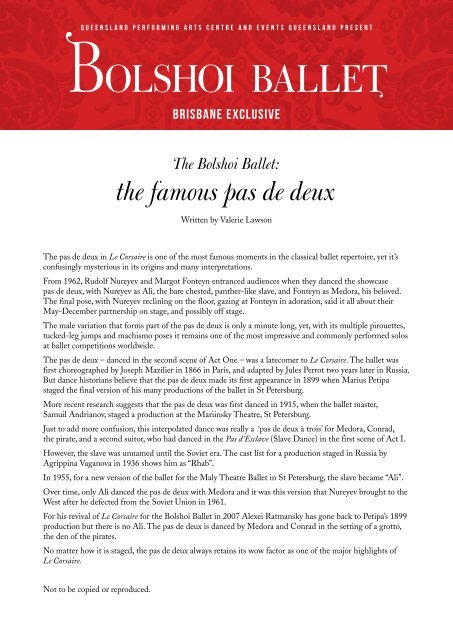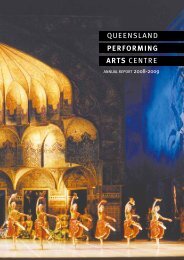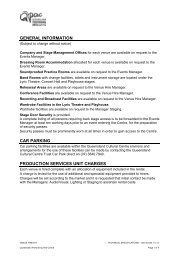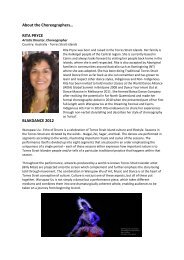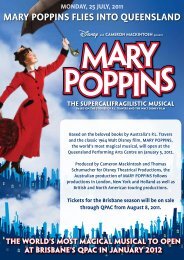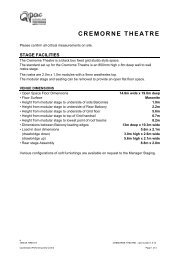Download - QPAC
Download - QPAC
Download - QPAC
Create successful ePaper yourself
Turn your PDF publications into a flip-book with our unique Google optimized e-Paper software.
QUEENSLAND PERFORMING ARTS CENTRE AND EVENTS QUEENSLAND PRESENT<br />
BRISBANE EXCLUSIVE<br />
The Bolshoi Ballet:<br />
the famous pas de deux<br />
Written by Valerie Lawson<br />
The pas de deux in Le Corsaire is one of the most famous moments in the classical ballet repertoire, yet it’s<br />
confusingly mysterious in its origins and many interpretations.<br />
From 1962, Rudolf Nureyev and Margot Fonteyn entranced audiences when they danced the showcase<br />
pas de deux, with Nureyev as Ali, the bare chested, panther-like slave, and Fonteyn as Medora, his beloved.<br />
The final pose, with Nureyev reclining on the floor, gazing at Fonteyn in adoration, said it all about their<br />
May-December partnership on stage, and possibly off stage.<br />
The male variation that forms part of the pas de deux is only a minute long, yet, with its multiple pirouettes,<br />
tucked-leg jumps and machismo poses it remains one of the most impressive and commonly performed solos<br />
at ballet competitions worldwide.<br />
The pas de deux – danced in the second scene of Act One – was a latecomer to Le Corsaire. The ballet was<br />
first choreographed by Joseph Mazilier in 1866 in Paris, and adapted by Jules Perrot two years later in Russia.<br />
But dance historians believe that the pas de deux made its first appearance in 1899 when Marius Petipa<br />
staged the final version of his many productions of the ballet in St Petersburg.<br />
More recent research suggests that the pas de deux was first danced in 1915, when the ballet master,<br />
Samuil Andrianov, staged a production at the Mariinsky Theatre, St Petersburg.<br />
Just to add more confusion, this interpolated dance was really a ‘pas de deux à trois’ for Medora, Conrad,<br />
the pirate, and a second suitor, who had danced in the Pas d’Esclave (Slave Dance) in the first scene of Act I.<br />
However, the slave was unnamed until the Soviet era. The cast list for a production staged in Russia by<br />
Agrippina Vaganova in 1936 shows him as “Rhab”.<br />
In 1955, for a new version of the ballet for the Maly Theatre Ballet in St Petersburg, the slave became “Ali”.<br />
Over time, only Ali danced the pas de deux with Medora and it was this version that Nureyev brought to the<br />
West after he defected from the Soviet Union in 1961.<br />
For his revival of Le Corsaire for the Bolshoi Ballet in 2007 Alexei Ratmansky has gone back to Petipa’s 1899<br />
production but there is no Ali. The pas de deux is danced by Medora and Conrad in the setting of a grotto,<br />
the den of the pirates.<br />
No matter how it is staged, the pas de deux always retains its wow factor as one of the major highlights of<br />
Le Corsaire.<br />
Not to be copied or reproduced.


